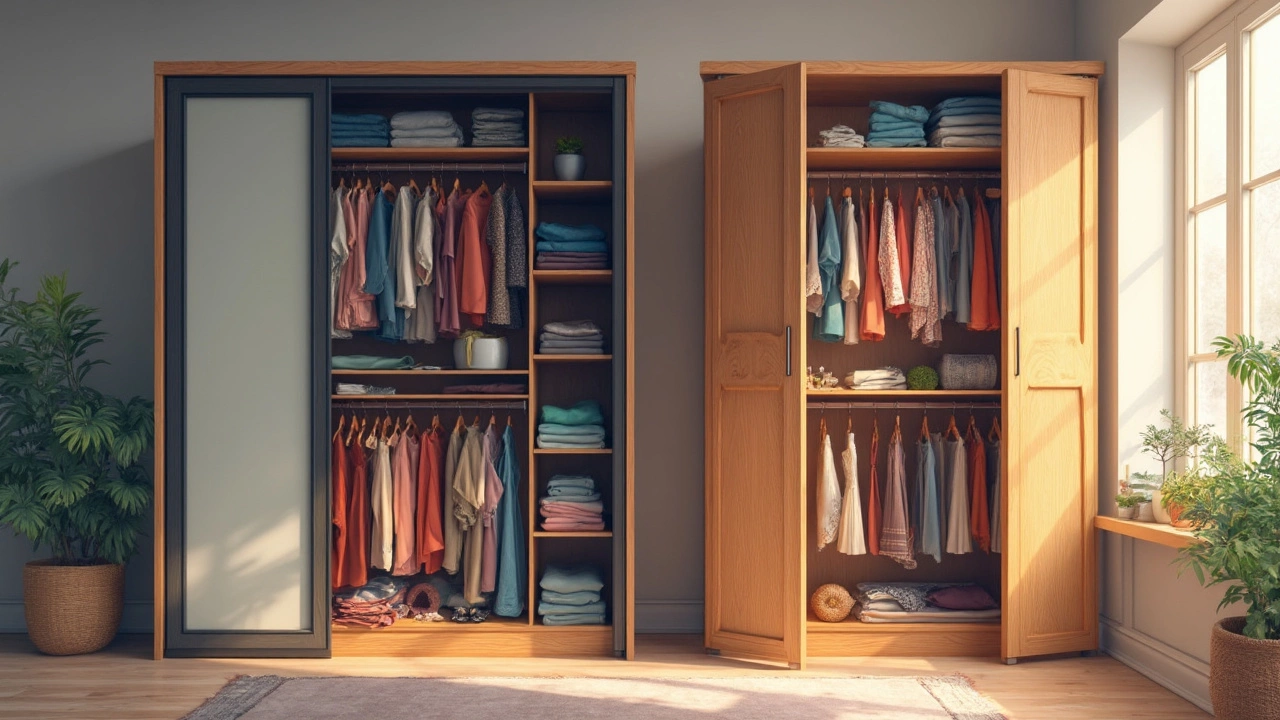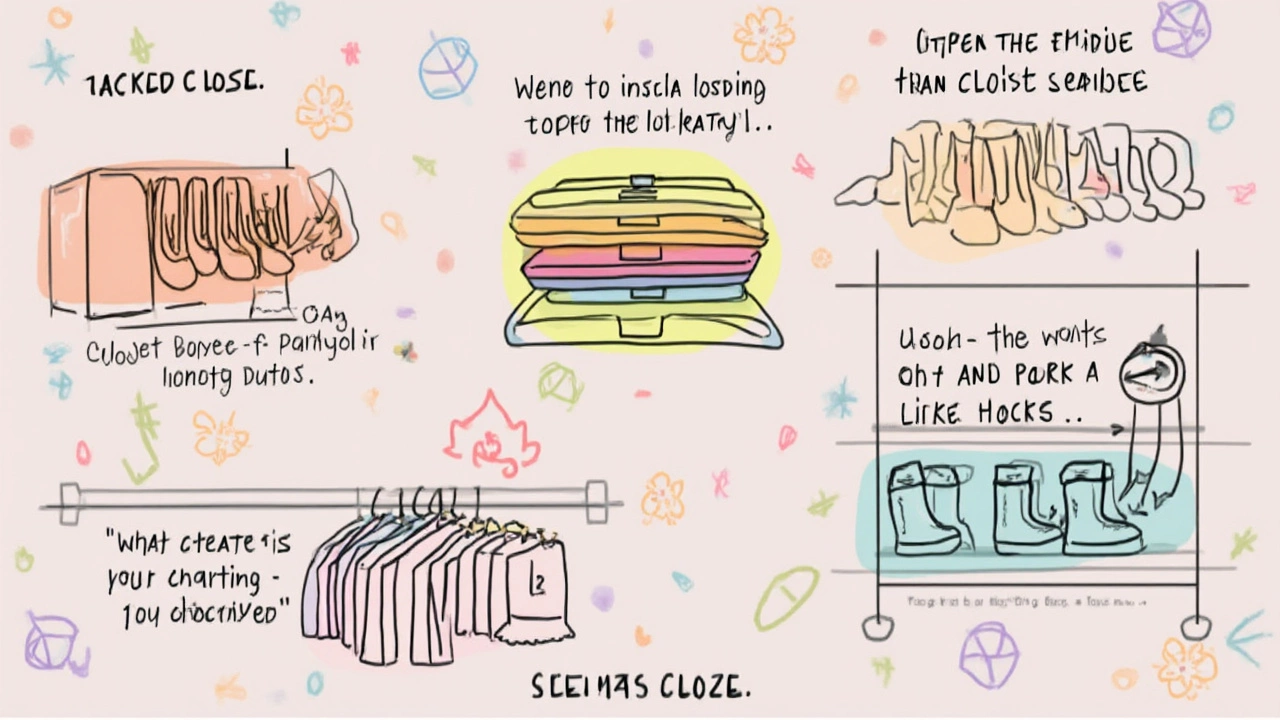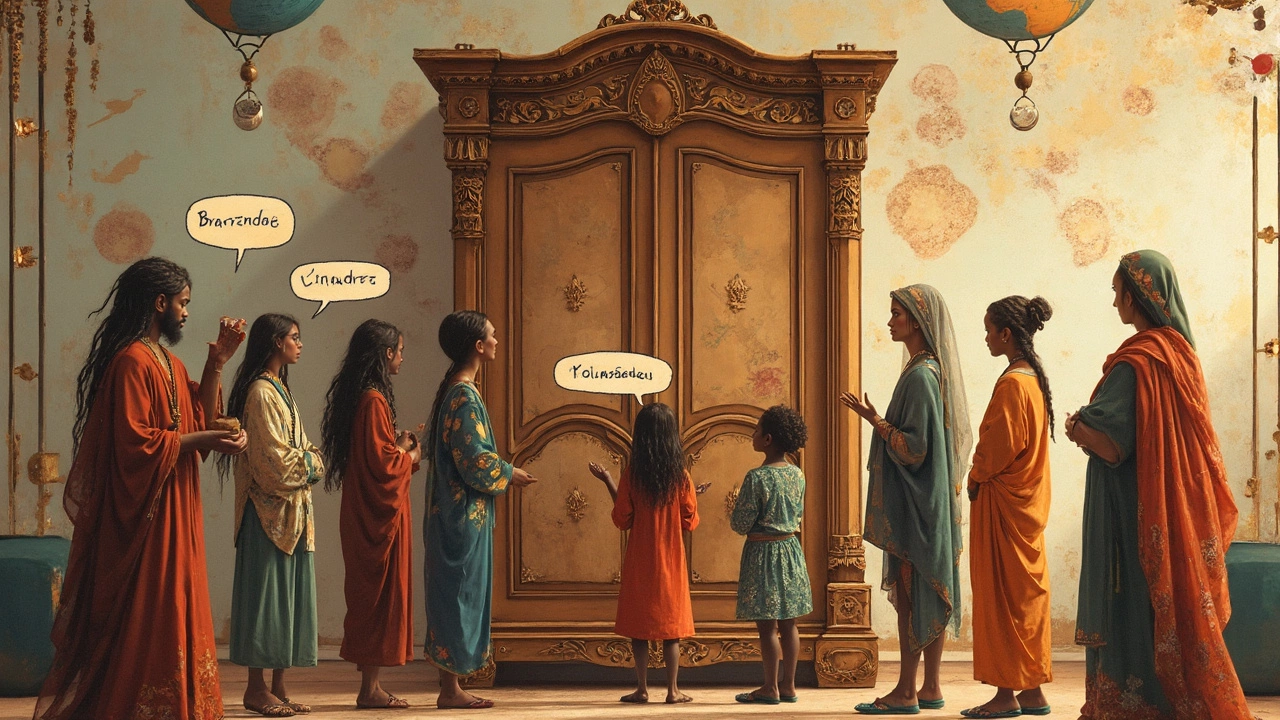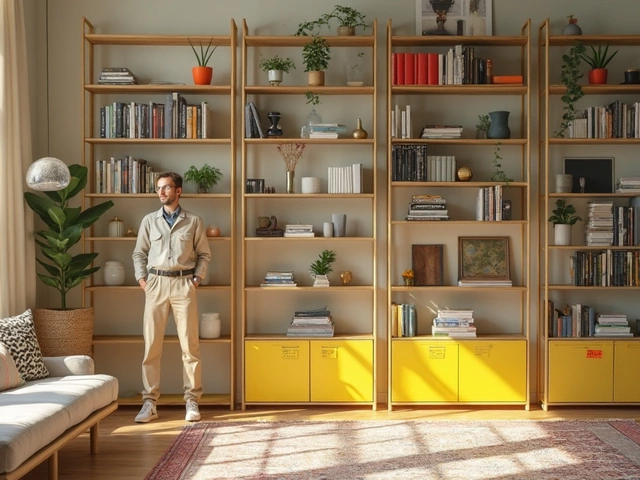
So, here’s the thing—what’s a wardrobe called in the U.S.? Most folks usually call it a 'closet.' Surprised? You're not the only one! It's pretty interesting how different regions have their own words for the same thing.
Let’s break it down. A wardrobe, as many in New Zealand and Europe might know it, is that big, freestanding piece of furniture you stuff your clothes into. Meanwhile, across the ocean in America, the go-to term is 'closet.' Usually, these are built into the walls and are part of the room itself. Who came up with that? Let’s just say it’s got a mix of history and convenience all tied into it.
Now, before you start re-arranging your bedroom layout, knowing the lingo makes a difference. It’s not just about what you call it; it’s about how it changes the way you think about organizing your space. Want to delve deeper into what separates a closet from a wardrobe and why it matters? Stick with me and I’ll take you through a journey of understanding and a few tips to make the most of your storage space.
- Understanding the Terminology
- Origins of the American 'Closet'
- Wardrobes vs. Closets
- Practical Tips for Organizing Clothes
- Regional Variations in Vocabulary
Understanding the Terminology
Alright, let's dive into the world of words and why things are named the way they are. You might think a simple wooden structure to stash clothes wouldn’t need much explanation, but there's more than meets the eye. In many places, especially outside the U.S., people talk about wardrobes. But, over in the States, folks prefer saying 'closet'. So, what's the deal?
Turns out, the term 'wardrobe' originally came from Old French, with roots in a phrase that means 'to guard' and 'robe.' Basically, it's your clothes' bodyguard. Now, in the U.S., a closet isn't normally a standalone piece of furniture. Typically, it's more of a built-in spot in a room, maybe with doors, shelves, or even fancy compartments.
- Wardrobe: Often a freestanding piece of furniture. Think of the big pieces you can move around the house.
- Closet: Built into the architecture of the building, part of the room's structure.
So, why not just call everything by one name? Well, languages love evolving—and regional differences make life interesting. In the U.S., the architecture that developed has made closets more common, fitting with the typical style of homes.
Check out this fun tidbit—in older homes in America, the absence of a 'closet' can sometimes lower property value, because it's such a staple in American design!
This difference in terms isn't just trivia; it impacts design decisions and how people approach organizing their stuff. Next time you hear someone mention a wardrobe or closet, you'll know there's a whole history behind those words.
Origins of the American 'Closet'
Ever wonder why Americans call it a closet instead of a wardrobe? Well, the tale goes back quite a few centuries. The word 'closet' comes from the Latin 'clausum,' meaning 'to close,' which makes a lot of sense since it's a space to close away your clothes out of sight. Early on, closets were small private libraries or study rooms, often a place to keep valuable items secure.
As these portable storage ideas evolved, especially in the new world practices of America, the closet as we know it took shape. When homes in America became more about efficiency after the colonial era, building these storage spaces into walls became more practical than hauling around a cumbersome piece of furniture. This built-in approach made better use of available space, especially in bustling cities where space was a luxury.
By the mid-20th century, the architectural influence of closets became a norm in American homes. This shift wasn’t just about practicality—there was a huge cultural push for a tidy, modern home, and closets were perfect for keeping things neatly tucked away. While Brits and Kiwis might still prefer their wardrobes, over in the U.S., closets became a staple feature, whether in bedrooms or hallways.
Here’s a cool tidbit: in a survey, nearly 70% of Americans said the closet is one of the top three must-have features in buying a home. Functional, you bet!

Wardrobes vs. Closets
Alright, let's break it down—what's the real difference between a wardrobe and a closet? Most folks might think they're the same, but there’s some cool stuff to know here.
Wardrobes are generally freestanding pieces of furniture. They often have doors, maybe a mirror, and are known for their classic, sometimes vintage, style. Styling choices can be vast, from modern sleek designs to those nostalgic pieces you might see in your grandma’s house.
Meanwhile, an American closet is usually built right into the walls of your home. They can be a lot bigger than wardrobes and serve the dual purpose of keeping your clothes out of sight and saving space. Plus, they can have shelves, drawers, and multi-functional organizers built right in. Imagine stepping inside a walk-in closet—that's a pure dream for many!
The choice between a wardrobe and a closet often comes down to personal preference and space. If you’re renting or prefer flexibility in arrangement, a wardrobe is versatile. But if you're nesting in your forever home, installing closets might be the way to go.
Here's a simple comparison:
| Feature | Wardrobe | Closet |
|---|---|---|
| Mobility | Freestanding, can be moved | Built-in, part of the architecture |
| Customization | Limited to external designs | Highly customizable with internal fittings |
| Space Usage | Occupies floor space | Maximizes room space |
So, when thinking about storage solutions, consider your needs! Are you someone who loves to change things up or prefers a tidy built-in solution? Knowing the difference can help find the perfect match for your style!
Practical Tips for Organizing Clothes
Alright, let’s get into the nitty-gritty of organizing your clothes. Whether you have a closet or a wardrobe, keeping things tidy is a game-changer. Here's how to make the most out of your space.
First, think about how you’re using your space. Odds are, you’re not maximizing it just yet. A simple way to start is by decluttering. Go through your clothes and be honest—is that floral shirt from five years ago really something you’ll wear again? If the answer’s no, donate or recycle it. Staying minimalist helps in managing space.
Once you’ve trimmed down, sort your clothes by season and type. Not only does this make your life easier in the morning rush, but it also helps in maintaining that sense of order. Try to keep similar items together—shirts with shirts, jeans with jeans.
Martha Stewart once said, "A place for everything, and everything in its place," and it couldn't be more spot-on.
Using storage solutions can work wonders. Think about hanging organizers for shoes, which free up floor space, and clear boxes for smaller items. You could also use drawer dividers for your underwear and socks. Over-the-door storage is another magic trick—perfect for extra space.
- Label containers: Having labels on boxes helps you find things quicker.
- Install shelves: High shelves can store seasonal items like heavy jackets or holiday sweaters until you need them.
- Double up on rails: If your closet has the height, use two rods instead of one.
For those who dig numbers, here’s a quick insight: a survey by ClosetMaid found that over 57% of people wish they had more organization in their home.
| Organization Tip | Effectiveness (%) |
|---|---|
| Decluttering | 85 |
| Using Organizers | 75 |
| Seasonal Sorting | 70 |
Finally, personalize your storage. It’s not just about functionality. Add a bit of personality with colors or patterns that make you smile every time you open that wardrobe or closet.

Regional Variations in Vocabulary
Ever wonder why a piece of furniture has different names depending on where you are? It’s really all about geography and cultural influences. In New Zealand, we’re familiar with a 'wardrobe' as a standalone piece of furniture. But hop over to the U.S., and you’ll find people refer to the same thing as a 'closet.' It’s not just about preference—it’s about architectural norms too. In the States, most homes come with built-in closets rather than standalone wardrobes.
Europeans might traditionally think of ornate, standalone wardrobes reminiscent of antique furniture pieces. Ask a French carpenter, and they might call it an 'armoire.' This disparity underlines how language and design trends influence each other—what’s built into architecture versus what’s standalone furniture.
Across the Australasian region, we usually stick to 'wardrobe,' but these days, you might hear 'closet' popping up in conversations, thanks to American movies and TV shows. Pop culture does wonders in sharing words across cultures, right?
Some folks in the UK might say 'cupboard,' usually referring to kitchen storage rather than for clothes, adding another layer to the mix. But when talking about clothes, 'wardrobe' dominates.
| Region | Common Term |
|---|---|
| America | Closet |
| New Zealand | Wardrobe |
| UK | Wardrobe or Cupboard (for clothes) |
| France | Armoire |
The vocabulary differences might seem small, but they actually point out how localized preferences can shape the spaces we live in. Next time you’re traveling or chatting with someone across the globe, remember these handy differences. It might just add to the conversation—or help when you’re hunting down furniture!



